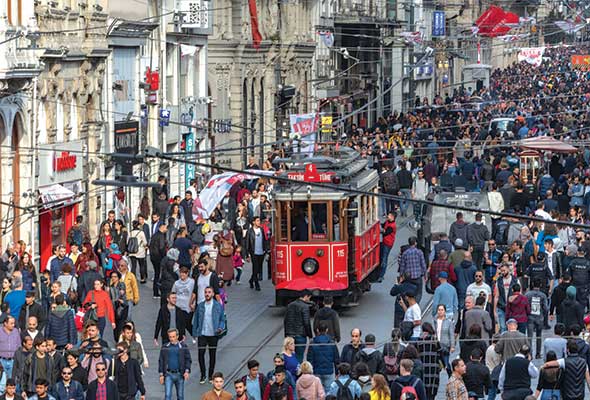What’s On travels to Istanbul
From the city’s iconic Byzantine churches and Ottoman mosques to its rooftop restaurants, here’s your bucket-list guide to Turkey’s largest city…
Welcome to a new series of What’s On travels to… Each month we’ll be bringing you a new destination from around the globe that we’re confident you’ll need on your travel bucket list.
This month, we head to the iconic city of Istabul.
Iconic Byzantine churches and Ottoman mosques to its rooftop restaurants, here’s our guide to Istanbul…
To do list
Sultanahmet
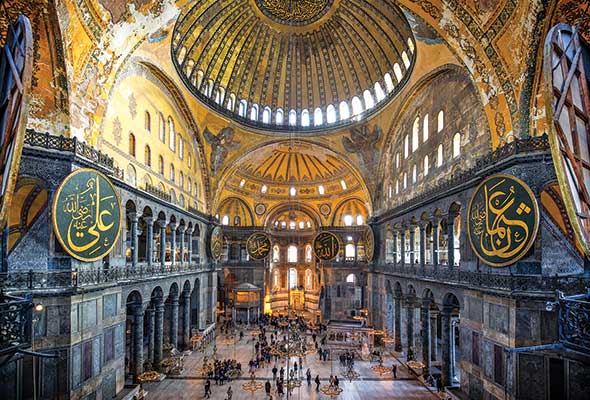
The historic heart of Istanbul and the point from which most tours of the city begin, Sultanahmet is a World Heritage site and home to both the Hagia Sophia and the Sultan Ahmed Mosque (The Blue Mosque). Lying within the district of Fatih (once the Byzantine city of Constantinople), the neighbourhood is pretty much rammed all year round and contains most of the city’s top attractions. There’s the Topkapi Palace, with its lavish courts and holy relics, and the underground marvel of the Basilica Cistern. The true wonder, however, is the Hagia Sophia. A former Byzantine cathedral with stunning mosaics and a magnificent giant dome, it was converted into a mosque after the Turkish conquest of Constantinople and is now a museum. Buy tickets in advance for all attractions to avoid long queues.
Çengelköy
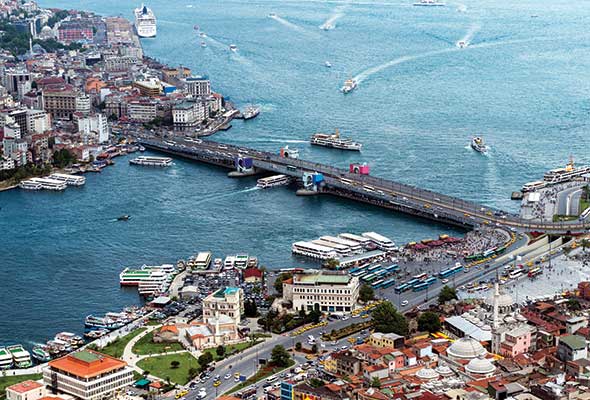
Overlooking the Bosphorus, it’s hard to imagine a better location for appreciating the topographical grandeur of Istanbul. Located on the Asian side of the Bosphorus, Çengelköy is a mainly residential district but includes a series of waterside restaurants and cafes, amongst them Tarihi Çinaralti. It’s a quiet area, renowned more for its wooden waterfront mansions than the frenetic nature of the wider city.
BeyoGlu
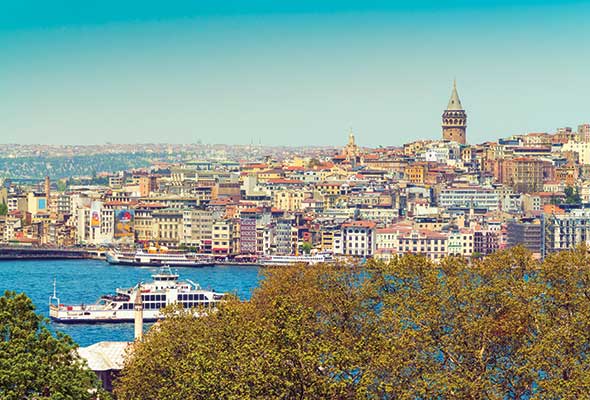
Across the Galata Bridge on the opposite side of the Golden Horn to Fatih is Beyoglu, a once seedy district of Istanbul that’s
now the beating heart of the city’s shopping, entertainment and nightlife. Its main artery is Istiklal Avenue, a wide, seemingly endless pedestrianised thoroughfare that stretches all the way from the former medieval Genoese citadel of Galata (now known as Karaköy) to Taksim Square. The avenue and its myriad side roads are filled with cafés, restaurants, cinemas, art galleries, libraries and theatres, while Karaköy – its central striking feature being the Galata Tower – is defined by steep cobblestone streets and boutique shops.
Orhan Pamuk’s Istanbul
The first Turkish Nobel laureate, Orhan Pamuk (who has “never left Istanbul – never left the houses, streets and neighbourhoods of my childhood”) lives and breathes the city of his birth. His work is grounded in its neighbourhoods and if you’re so minded you can follow in his footsteps, tracing your way from Sahaflar Carsisi, the city’s used-book bazaar, to The Museum of Innocence, both of which are located in Beyoğlu. The latter was created by Pamuk as a companion to his novel of the same name and is situated in a 19th-century timber house in Cukurcuma. Inside you will find the quirky minutiae of Istanbul life from the mid to late 20th century.
Grand Bazaar
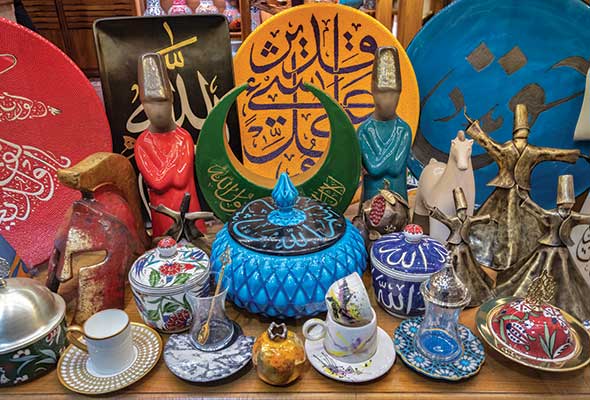
A short walk from Sultanahmet is the Grand Bazaar, a sprawling warren of alleyways and traders that can bamboozle the uninitiated. There are an estimated 4,000 shops within this colossal covered market, selling everything from fabrics and jewellery to coffee and sweets, but no one really knows the true figure. With 64 streets and 22 entrances, the easiest thing to do is get lost. Just embrace the madness and haggle. Don’t even attempt to visit if you suffer from claustrophobia.
ALSO READ: What’s On travels to Finland
What’s On travels to Barcelona
For foodies
Ficcin
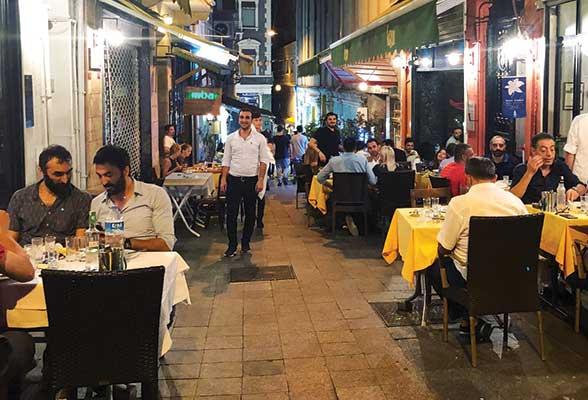
Spread across a number of venues on either side of the same narrow street, Ficcin is a hop, skip and a jump from Istiklal Avenue and serves both classic Turkish dishes and Circassian specialities. Located on Kallavi Street and owned and run by women, its specials include manti (Turkish dumplings)
Pandeli
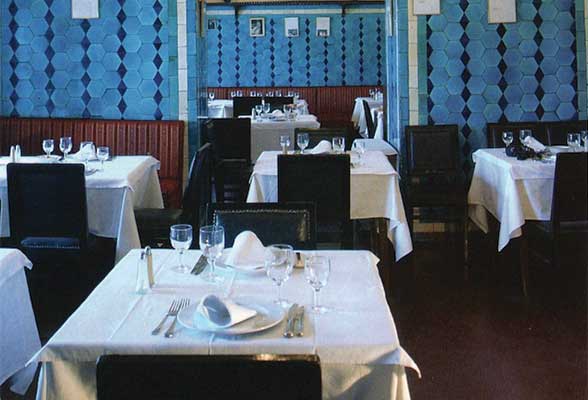
A meal at Pandeli is as much about the location as it is about the food. First opened in 1901, it is reached via a steep set of stairs near the Spice Bazaar and is defined by its shimmering blue iznik tiles. The food is traditional Turkish – think stuffed vegetables and pan-fried lamb livers.
facebook.com/PandeliRestaurant
Zeferan
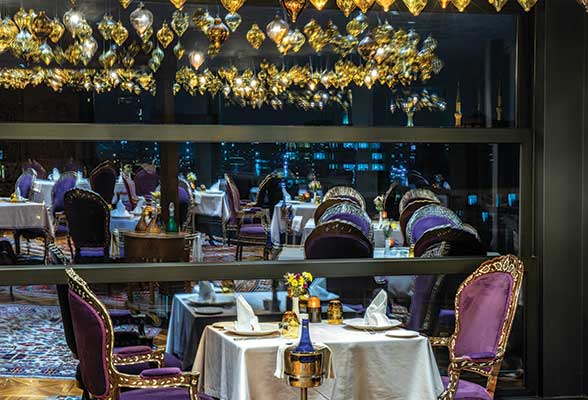
Located on the top floor of the Ajwa Hotel Sultanahmet with spectacular views of both the Golden Horn and the Sea of Marmara, Zeferan serves traditional Azeri food in a luxurious setting. Try the gurza (dumplings with minced meat topped with buffalo yoghurt) and the patlican sarma (grilled aubergine with walnuts).
ALSO READ: What’s On travels to Cape Town
Where to stay
Ajwa Hotel Sultanahmet
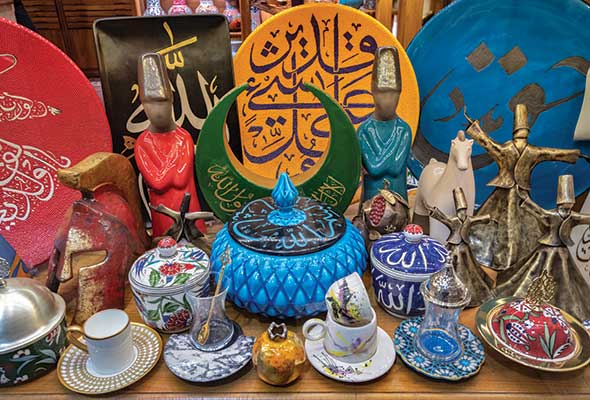
Within easy walking distance of all of Sultanahmet’s major attractions, the Ajwa Hotel is defined as much by its attention to detail as it is by its location. First opened just under two years ago, this luxury boutique hotel has gone the extra mile when it comes to finery and craftsmanship. Its carpets are all from Tabriz in Iran, its mother of pearl is from Damascus, and its paintings are all by Azeri artists. The latter is understandable given the hotel’s owners are originally from Azerbaijan. Even the ceilings have been hand-painted, and the building itself is a combination of both Seljuk and Ottoman architecture.
In total there are 61 rooms, each featuring solid walnut furniture, Persian rugs, hammam-style bathrooms and ceramic bathroom tiles. Views can include either the old city or the Sea of Marmara, and if you’ve done too much sightseeing you can unwind at the Afiya Spa, with its authentic Turkish Hammam.
Last year the hotel also opened the first of its 10 planned Ajwa Homes – renovated and refurbished classical Turkish houses that can be used for both short-term or long-term stays. At the heart of the project is a commitment to preserving Turkish tradition and architecture. All properties, including the hotel, are fully halal.
Room rates start from Dhs750, ajwa.com.tr
Do’s and don’ts
Things to remember while you’re in Istanbul
Do: Venture outside of Sultanahmet and the traditional tourist zones. Istanbul is a huge city and offers much for the curious traveller.
Do: Take good walking shoes. You can use trams and public transport of course, but you’re going to be doing a lot of walking and Karaköy, in particular, is very hilly
Don’t: Get duped by con artists. Istanbul is filled with tricksters, including the classic shoe shine scammers. Do not pick up any item dropped by a shoe shiner..
Don’t: Use taxis. They are expensive and many of them will rip you off.
— For the best of Dubai straight to your inbox, sign up for our newsletter.
Images: provided and Getty

